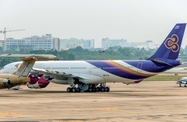A high-speed railway line could link Thailand, Laos and China as early as 2015, with construction work set to begin in 2011. The joint venture is aimed at strengthening regional integration and economic ties, though questions remain over how it will affect the ASEAN economy.
Thailand’s Deputy Prime Minister Suthep Thaugsuban announced on December 6 that a discussion had been held between Thai, Chinese and Laotian officials on the possible routes the new railway will follow. According to Suthep, the first line will connect Bangkok to Nong Khai in north-eastern Thailand, with the 640-km line then extending through Laos into China.
The Bangkok-Nong Khai line is just one part of a much larger plan that the Thai government and Ministry of Transport officials see as regenerating the nation’s entire rail network for freight and passenger movement. Another international route is set to run from the Thai capital to the Malaysian city of Padang Besar, while other lines will extend from Bangkok to Rayong in the east, Ubon Ratchathani to the north-east and Chiang Mai to the north.
The government has been working to drum up interest in the project both at home and abroad, promoting it as a cornerstone of future economic development. In late September, Prime Minister Abhisit Vejjajiva told delegates attending an investment road show in New York that the overhaul would revitalise the local and regional economies.
“These high-speed trains will not only facilitate the rapid movement of goods and people, but will provide even more benefits to Thailand once ASEAN becomes a single market,” Abhisit said. The 10-member bloc has set 2015 as the target for creating a single regional economic market known as the ASEAN Economic Community.
The expected costs of the rail network are significant, with the Bangkok-Nong Khai leg alone estimated at between $4bn and $6bn. The expanded grid of high-speed lines that has been proposed has a budget of some $27bn, though China has said it will provide some of the funding for the projected links in the regional network.
For the Thailand project the links will be more material, as the two economies, once connected, are likewise expected to become more closely integrated. However, while the initial proposals for the Bangkok to Nong Khai do appear to lock Thailand into a close working relationship with China, officials have been at pains to stress that the wider scheme will not necessarily be dependent of Beijing for all their needs.
At the end of October, Transport Minister Sohpon Zarum said that despite China’s undoubted success in high-speed rail projects, the procurement processes for the development of the rail network would be competitive.
“We are not focusing on China alone. If other countries have better proposals we will consider them,” Sohpon said after parliament approved a draft framework for negotiations with China.
Despite all of the benefits touted for the scheme, some question marks remain as to the financial viability of the project. While high-speed trains are ideal people movers, the same cannot be said for cargo. If the lines are to be used by both rapid passenger trains and slower freight trains, the benefits of the high-speed services could be diminished, as heavy cargo traffic would restrict passenger schedules. Furthermore, there are few types of cargo that needs to be moved at the speeds promised for the new Thai network. That said, given the current average speed of 60-km-per-hour average, any improvement in transit times is be welcomed by freighters, let alone the 250-km-per-hour speeds forecast for the new services.
The new high-speed rail network is primarily passenger focused, and is projected to see almost 130,000 people a day use the fast service by 2017, when most lines are expected to be in operation. With the Thai economy in a state of transition from agriculture and heavy industry toward a technology and service-based model, there will come a time when the movement of people will be as important as that of freight, a fact recognised by proponents of the high-speed rail network.

